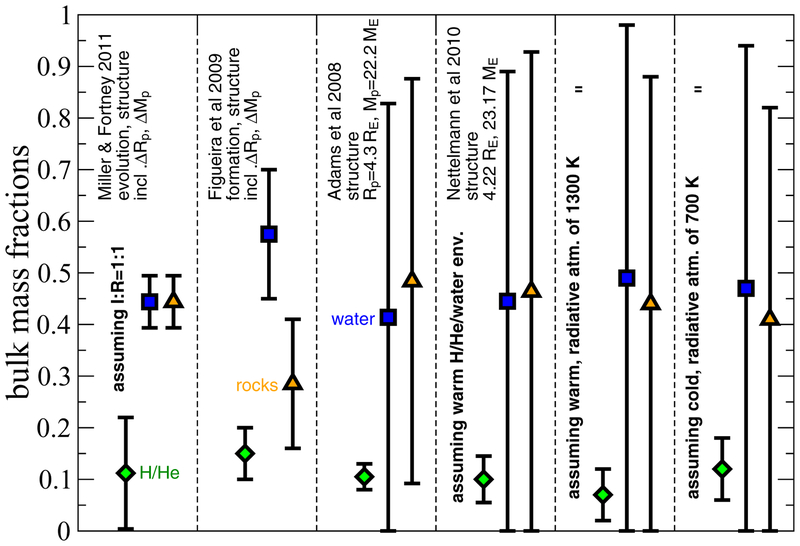Fig. 18.—
Constraints on the bulk composition of GJ 436b as determined from models of its structure, evolution, and formation. Possible compositions are shown for six different model assumptions and/or imposed constraints. For each, the sum over the displayed mass fractions of H/He (green diamonds), water (blue squares), and “rock” (includes silicates plus iron; orange triangles) equals 1. All calculations take into account the planet’s mass Mp and radius Rp as one set of constraints; the two leftmost models consider uncertainties in Mp and Rp, which expands the possible H/He mass fraction by a factor of ~2, while the four on the right adopt specific Mp and Rp values from Torres et al. (2008). From left to right, the derived constraints are based on (i) the thermal and structural evolution models of Miller & Fortney (2011) that assume an ice:rock ratio of 1:1 and that impose constraints based on the age of the GJ 436 system; (ii) the formation, disk-planet evolution (including migration), and structural models of Figueira et al. (2009) that compute various formation paths consistent with Mp and Rp; (iii) the structure models of Adams et al. (2008) that consider precise values for Mp, Rp, and atmospheric temperatures and thus derive a smaller range of acceptable H/He values; (iv) the structural models of Nettelmann et al. (2010) that assume that water is mixed into the outermost H/He envelope; (v) structural models based on Nettelmann et al. (2010) that assume that a pure H/He layer resides above a water layer with a warm (1300 K) deep isothermal radiative region; (vi) a model similar to the one on the immediate left, except the isothermal radiative region is cool (700 K) and the planet is old (> 10 Gyr). Note from comparing the latter two models that atmospheric temperatures affect the derived H/He mass fraction. A color version of this figure is available in the online journal.

